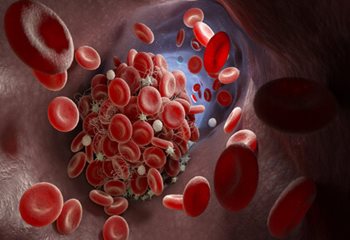Sign in or register for an account.

Caring for Patients with Bleeding Disorders
This course has been designed for healthcare professionals administering and/or caring for patients with bleeding disorders. Although the patient may receive long-term care at a physician’s office or Hemophilia Treatment Center, day-to-day care occurs at home, school, work, camp, etc. All clinicians involved in infusing antihemophilic agents and those caring for patients receiving these medications need a working knowledge of the diagnoses for which they are given, proper storage, preparation and administration, and disposal, as well as appropriate interventions, and the psychological implications of having these diseases and receiving treatment for them. Education related specifically to bleeding disorders is crucial to the safe and effective care of these patients.
State Boards of Nursing have varying positions on the role of the LPN/LVN in the administration of infusion therapy, including the administration of antihemophilic agents. A link to each state board of nursing is listed here. Competency requirements are obtained and maintained through the nurse’s employer, facility, or institution.
Questions? Check out our FAQs page and How Online IV Certification Works!
Objectives
Upon completion of this course, the participant will be able to:
- Describe the symptoms of bleeding disorders.
- Explain the factor deficiencies in Hemophilia A, Hemophilia B, and von Willebrand disease.
- Describe R.I.C.E.
- Recognize antifibrolytic agents used to treat bleeding disorders.
- Describe at least two ramifications of bleeding disorders presented in this course.
- Identify at least three treatments used for patients with inhibitors.
- Identify at least two potential future treatments for bleeding disorders and their potential advantages over current treatments.
Curriculum
Chapter 1: Introduction
- Definition
- Symptoms
- History
- The coagulation cascade
Chapter 2: More Common Bleeding Disorders
- Factor VIII deficiency
- Factor IX deficiency
- Von Willebrand disease
Chapter 3: Treatment
- R.I.C.E.
- Prophylactic factor replacement
- Other medications/substances
Chapter 4: Less Common Factor Deficiencies
- Factor I
- Factor II
- Factor V
- Combined factor V/VIII
- Factor VII
- Factor X
- Factor XI
- Factor XII
- Factor XIII
Chapter 5: Ramifications of Bleeding Disorders
- Joint damage
- Pain
- Health-related quality of life
- Financial impact
- Social and emotional impact
Chapter 6: Inhibitors
- Definition
- Measuring inhibitors
- Treatment for patients with inhibitors
- Bypassing products
- PCCs and APCCs
- Recombinant Factor VII
- Other medications
- Plasmapheresis
- Immune tolerance induction
Chapter 7: The Future of Bleeding Disorder Treatment
- Fitusiran
- Concizumab
- B-domain depleted porcine FVIII
- Gene therapy
- Improved FVIII & FIX half-life
Chapter 8: The Role of the Nurse
Chapter 9: Treatment Administration
Chapter 10: References
- California Bill 241
- Implicit Bias in Healthcare
- What is Implicit Bias?
- Implications of Implicit Bias in Healthcare
- How to Reduce Implicit Bias
Price: $30.00
Contact Hours: 2.5

Course Author

Pamela Clark
Pamela Clark, CRNI, is an infusion nurse with the Houston Methodist Sugar Land Hospital. She has more than 35 years of experience in infusion therapy and infusion education with both licensed nurses and patients. Her experience spans multiple infusion settings including: acute care, long-term care, home infusion, and ambulatory infusion care. She also has experience in oncology and oncology research.
Read Full BioCourse Accreditation
See our Accreditation Statements page to view our accreditation information.